Aerial Nature Photography is an incredible way to capture the beauty of the natural world from a unique perspective. Whether you’re a professional photographer or a hobbyist, taking stunning aerial photos of nature can be a rewarding experience. Why aerial photography is unique and captivating
Brief History of Aerial Photography
The first aerial photograph was taken in 1858 by French photographer Nadar, who captured an image of Paris from a hot air balloon. However, it wasn’t until the early 20th century that aerial photography became more widespread, thanks to the development of airplanes and cameras that could be mounted on them.
During World War I, aerial photography was used extensively for military purposes, such as mapping and reconnaissance.
After the war, aerial photography became more accessible to civilians, and photographers began to experiment with new techniques and equipment. In the 1930s, the first aerial cameras were developed, which allowed photographers to take high-quality images from airplanes.
In the 1950s, the invention of the helicopter made it possible to take even more precise and detailed images from lower altitudes.
Today, aerial photography is more popular than ever, thanks to the development of drones, which allow photographers to capture images from almost any angle and altitude.

Image by Paulo Figueiredo from Pixabay
Drones for Aerial Nature Photography
Aerial nature photography requires specialized equipment to capture stunning images from high above. Drones are an essential piece of equipment for Aerial Nature Photography. They allow you to capture unique angles and perspectives that you simply can’t get from the ground.
But, first let us discuss what are drones, and what capabilities do they offer for aerial photography. Let’s find out!
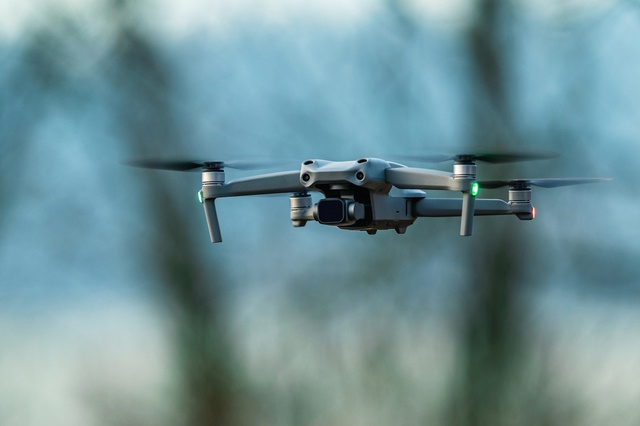
Image by Depositphotos
First of all, drones are unmanned aerial vehicles that are controlled by a remote control or a mobile device. They come in a variety of sizes and types, ranging from small toy drones to larger professional-grade models.
One of the key capabilities of drones for aerial photography is their ability to fly at high altitudes. This allows you to capture stunning shots of landscapes and natural features from a bird’s eye view. Additionally, drones can also fly at low altitudes, which is perfect for capturing close-up shots of plants and animals.
Another advantage of using a drone for aerial nature photography is its maneuverability. Drones can fly in all directions, which allows you to capture shots from a variety of angles and perspectives. They can also hover in place, which is useful for getting steady shots of still subjects.
Drones also offer a range of advanced features and capabilities that can enhance your aerial photography. For example, many drones come with built-in GPS systems, which can help you track your drone’s location and navigate to specific areas.
Some models also offer obstacle avoidance sensors, which can help prevent collisions with trees or other obstacles.
Overall, drones are an essential tool for aerial nature photography. They offer a wide range of capabilities and features that allow you to capture stunning shots from unique perspectives.
Here are examples of popular drones:

The DJI Mini 3 Pro is a compact and lightweight drone with a 4K camera, 3-axis gimbal, and obstacle avoidance technology. It has a maximum flight time of up to 31 minutes and a transmission range of up to 10 kilometers. The Mini 3 Pro is a great option for those looking for a portable and easy-to-use drone that can capture high-quality footage

The DJI Mavic 3 Pro is a high-end drone with a Hasselblad camera, capable of capturing 5.1K video and 20MP stills. It has a 3-axis gimbal for stable footage and obstacle avoidance technology for safer flying. The Mavic 3 Pro has a maximum flight time of up to 46 minutes and a transmission range of up to 15 kilometers. It’s a great option for professional photographers and videographers looking for a powerful and versatile drone.
For further reading, check my post Here
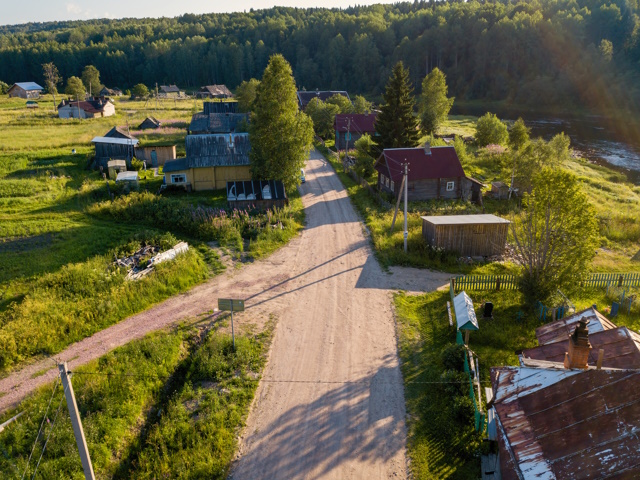
Image by Depositphotos
Planning and Preparation
Planning and preparation are crucial to getting the most out of aerial nature photography. The following are some important activities to be done before shooting:
1. Master flying your drone
Flying a drone can be a thrilling experience, but it can also be intimidating for beginners. Don’t worry, with a little practice and patience, you can master flying your drone and take your aerial nature photography to the next level.
First things first, make sure you read the manual and familiarize yourself with the controls of your drone. It’s important to understand how your drone works before taking it for a spin. Once you feel comfortable with the controls, it’s time to start practicing.
Start by flying your drone in an open area with no obstacles. This will give you the space you need to practice and get comfortable with the controls. Take it slow and steady, and don’t be afraid to make mistakes. Remember, practice makes perfect.
When you’re ready to take your drone out for some aerial nature photography, make sure you plan ahead. Scout out the location beforehand and make note of any potential obstacles or hazards. This will help you avoid any accidents and ensure a successful flight.
Always follow the rules and regulations for flying drones in your area. This will help you avoid any legal trouble and keep you and others safe.
As you fly your drone, keep an eye on the battery life and make sure you have enough time to capture the shots you want. It’s also important to keep an eye on the weather conditions and avoid flying in strong winds or rain.
In conclusion, mastering flying your drone takes practice and patience. With these tips and a little bit of practice, you’ll be capturing stunning aerial nature photography in no time. So, get out there and start flying!
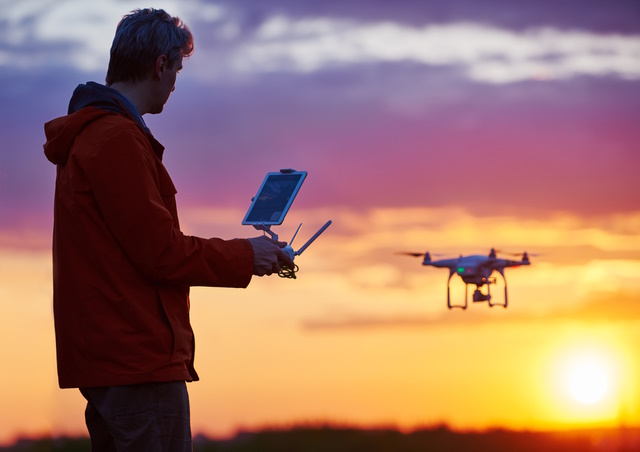
Image by Depositphotos
2. Choose the right location for aerial photography
Choosing the right location is key when it comes to aerial nature photography. Here are a few tips for finding the perfect spot for your photoshoot:
- Look for areas with interesting natural features, such as mountains, lakes, or forests. These features can add depth and interest to your photos.
- Check weather conditions before heading out. Overcast days can produce moody, dramatic shots, while sunny days are great for capturing bright, vibrant colors.
- Consider the time of day. The early morning and late afternoon are known as the “golden hours” for photography, as the light is softer and more flattering. Avoid shooting in the middle of the day when the light is harsh and overhead.
- Look for areas with minimal obstructions. Power lines, buildings, and other man-made objects can detract from the natural beauty of your shots.
Remember, safety should always be a top priority when it comes to aerial nature photography. Be sure to follow all local regulations and guidelines, and never fly your drone near people, wildlife, or aircraft. With a little planning and preparation, you can capture stunning aerial shots of the natural world.
3. Understand weather conditions and lighting
Understanding weather conditions and lighting is essential when it comes to aerial nature photography. Here are a few tips to keep in mind:
- Check the weather forecast before heading out. Overcast days can produce moody, dramatic shots, while sunny days are great for capturing bright, vibrant colors.
- Be aware of the time of day and the direction of the sun. The early morning and late afternoon are known as the “golden hours” for photography, as the light is softer and more flattering. Shooting directly into the sun can create lens flares and other unwanted effects.
4. Pre-flight checklist for drone photography
Before taking off with your drone for aerial nature photography, it’s important to run through a pre-flight checklist. Here are a few items to include:
- Check that your batteries are fully charged.
- Verify that your drone’s firmware is up-to-date.
- Ensure that your remote control is synced with your drone.
- Calibrate your drone’s compass and GPS.
- Double-check that your memory card is properly inserted and has enough storage space.
- Check the weather conditions and make sure it’s safe to fly.
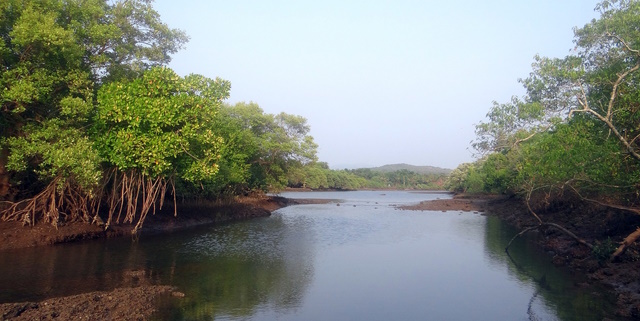
Image by Bishnu Sarangi from Pixabay
Tips for Capturing Beautiful Aerial Nature Photos
-
Mind the Composition
Composing your shots from the sky is an essential aspect of aerial nature photography. Here are a few tips to keep in mind:
- Use the rule of thirds: Divide your frame into thirds and place your subject at one of the intersecting points for a balanced and visually pleasing composition.
- Look for leading lines: Use natural features such as rivers, roads, or tree lines to draw the viewer’s eye into the scene.
- Use different focal lengths: Try out different lenses or focal lengths to add depth and variety to your shots.
- Experiment with angles: experimenting with angles can make a huge difference in the quality of your shots. Don’t be afraid to try out different viewpoints. Consider flying your drone higher or lower, and experimenting with tilt and pan angles to capture unique shots that others may not have seen before.
You can also try shooting from different sides of the subject to get a completely different perspective.
For example, the following photo is taken straight down (vertical)
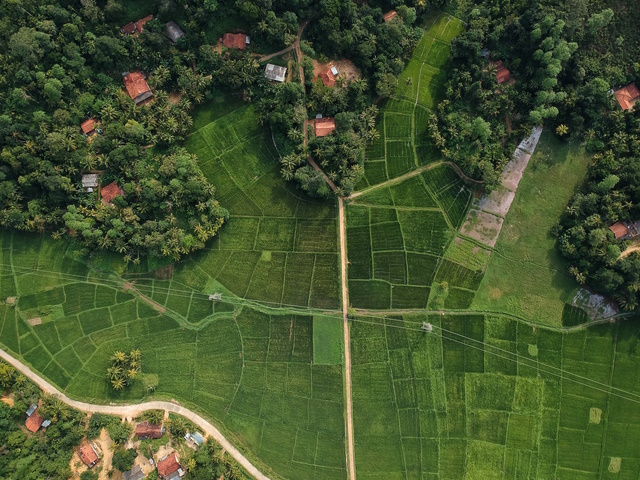
Photo by sasha set on Unsplash
-
Capture motion and movement in your photos
Capturing motion and movement in your aerial nature photos can add a sense of dynamism and excitement to your images.
One way to do this is by using a slower shutter speed to capture the motion blur of moving subjects like waterfalls, rivers, and waves crashing on the shore.
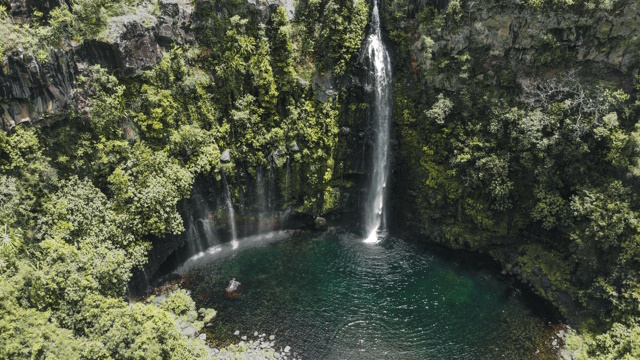
Photo by Kevin Charit on Unsplash
Another way is to shoot in burst mode to capture a series of images and create a stop-motion effect of moving subjects like wildlife or people.
It’s also important to consider the direction of movement in your composition. For example, if a bird is flying toward the edge of the frame, it can create a sense of tension and anticipation as the viewer wonders what’s beyond the edge. Similarly, if a waterfall is flowing from the top of the frame to the bottom, it can create a sense of direction and flow in the image.
Experiment with different shutter speeds, burst modes, and framing techniques to capture the movement and motion of the natural world from a unique perspective.
-
Consider Shooting during the golden hour
Shooting during the golden hour is a great way to capture stunning aerial nature photography. The golden hour refers to the time just after sunrise and just before sunset when the sun is low in the sky and the light is warm and soft. This lighting creates a beautiful, golden glow that can make your photos look magical.
During this time, the shadows are long, and the light is directional, giving your photos more depth and dimension. This can be especially beneficial when taking aerial photos of landscapes or nature scenes.
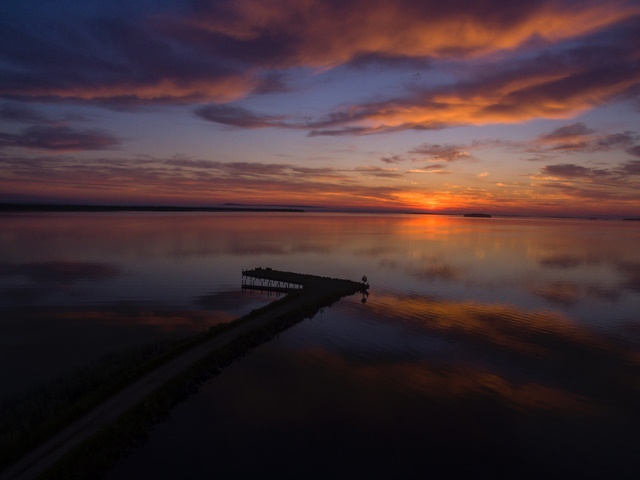
Photo by Aaron Burden on Unsplash
If you want to capture the best shots during the golden hour, be sure to plan ahead and arrive early to your location. This way, you can set up your drone and equipment before the light is at its peak.
Remember to also adjust your camera settings to account for the low light conditions. With a little preparation and patience, you can capture some truly stunning aerial photos during the golden hour.
-
Enhance your photos in post-processing
Capturing stunning aerial photos is only half the battle. Once you’ve got your shots, you’ll want to edit them to bring out the best in your images. Here are some tips for enhancing your aerial photos in post-processing:
- Correct the horizon: Adjust the horizon line to be straight and horizontal. It’s easy to lose track of the horizon line while capturing photos from a drone.
- Adjust exposure and contrast: Aerial photos tend to have high contrast due to the strong sunlight. Adjusting the exposure and contrast can make the image look more balanced and natural.
- Remove unwanted objects: Sometimes you may find that there are unwanted objects or elements in your image. You can remove them using the clone stamp tool in your editing software.
- Crop your image: Cropping can help to remove distracting elements in your photo and bring more focus to the subject.
- Use saturation and vibrancy: Adjusting the saturation and vibrancy can help to bring out the colors in your photo, making them more vivid and eye-catching.
- Sharpen your photo: Aerial photos may appear soft due to the movement of the drone. Sharpening your photo can help to bring out more details in the image.
Remember, editing should be used to enhance your image, not to completely transform it. Use these tips to improve your aerial photos while maintaining the natural beauty of the scene.
If are looking for editing tutorials, you can check my editing tutorials, and my YouTube channel there are many tips and tutorials there.
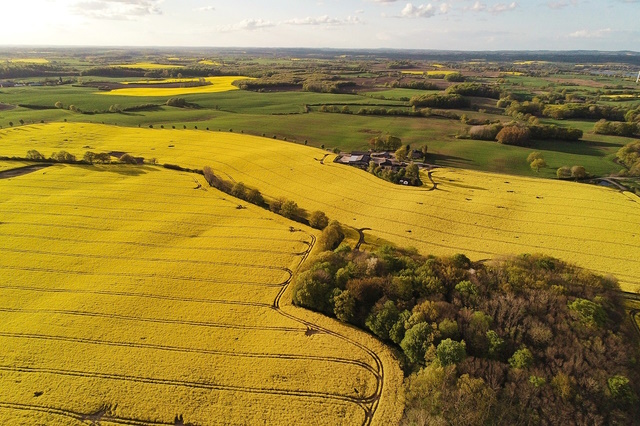
-
Practice, practice, practice:
Like any skill, aerial nature photography takes practice. Take your drone out for regular flights and experiment with different techniques to improve your skills.
Ethics and Safety
-
Always obey drone regulations and laws
It is extremely important to follow drone regulations and laws to ensure safe and legal flying. Some regulations to keep in mind include registering your drone with the relevant authority in your country, respecting no-fly zones, and flying below a certain altitude.
It is also important to be aware of privacy laws when taking aerial photographs. Make sure you are not infringing on anyone’s privacy or violating any laws while taking photographs.
Remember to always be mindful of your surroundings and avoid flying your drone near wildlife, as it can cause stress and disturbance to the animals.
-
Stay safe during aerial photography
Aerial nature photography can be a thrilling and rewarding experience, but it’s essential to prioritize safety above all else. Here are some tips to help you stay safe while capturing stunning photos from above:
- Always keep your drone in your line of sight and be aware of your surroundings.
- Check the weather forecast before flying and avoid flying in strong winds, rain, or fog.
- Don’t fly your drone near airports or other areas where drones are prohibited.
- Make sure your drone is in good condition and that you have all the necessary equipment, such as extra batteries, propellers, and a first-aid kit.
- Follow the manufacturer’s instructions for your drone and camera equipment.
- If you’re new to drone flying, consider taking a class or working with a professional to learn the ropes.
- Always respect the privacy of others and avoid flying over private property without permission.
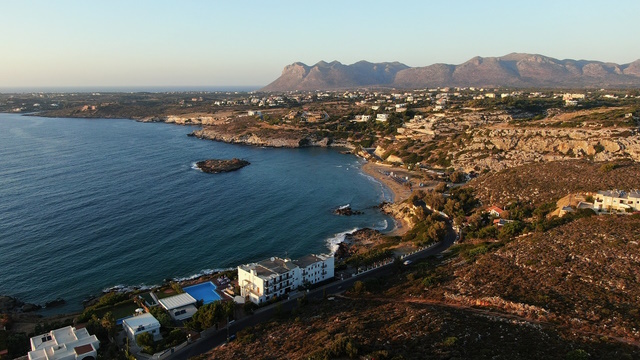
Image by Alina Chereches from Pixabay
Final thoughts and recommendations
As we come to the end of this article on aerial nature photography, we hope that you have found it informative and useful in your pursuit of capturing stunning aerial shots of nature. Here are some final thoughts and recommendations to keep in mind:
- Aerial nature photography can be a challenging but rewarding experience. Don’t be afraid to experiment with different angles, compositions, and lighting conditions to capture unique and stunning shots.
- Always prioritize safety when flying your drone. Make sure to follow local regulations and laws, and avoid flying in restricted areas or near wildlife.
- Invest in high-quality equipment, including a reliable drone, camera, and lenses suitable for aerial photography. This can make a significant difference in the quality of your photos.
- Take time to post-process your aerial photos to enhance their colors, contrast, and sharpness. But remember not to overdo it – keep the final product looking natural and true to life.
- Keep practicing and experimenting with different techniques and styles to develop your skills and create a portfolio of stunning aerial nature shots.
We hope that these tips and recommendations have inspired you to try out aerial nature photography and capture the beauty of nature from a unique perspective. Happy shooting!
Thanks for reading, I hope you enjoyed the article, in case you have any questions just drop them below & I will be happy to answer you.
If you enjoy the site, don’t forget to subscribe, we will only inform you when a new article is posted.

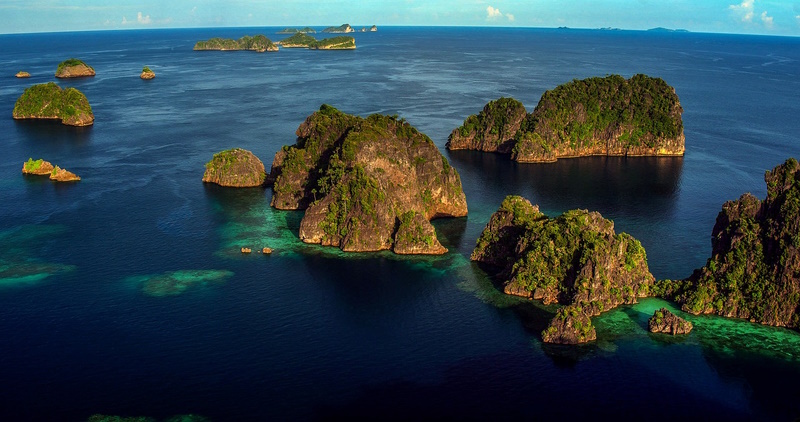







I found this article fascinating. Many of us are taking landscape and nature photos without getting what we expect. But your advice in this article is clear and simple. I appreciate how you explained the different types and methods of aerial photography and the challenges and rewards of capturing nature from above.
Drones have definitely had a great impact, opening up a wide range of new possibilities for aerial photography. It is a sample of how new technologies can expand our possibilities.
I have a question about photo editing: Can you use artificial intelligence to improve your photos? Do you know any artificial intelligence tool to retouch photos?
Thank you for your kind words, I’m glad you found the article informative and helpful.
Regarding your question about photo editing, yes, artificial intelligence (AI) can be used to improve photos. There are a variety of AI-powered photo editing tools available that can help to enhance images, adjust colors and lighting, and even remove unwanted objects from photos.
Some popular AI-powered photo editing tools include Adobe Photoshop, Skylum Luminar, and Topaz Labs AI Gigapixel. These tools use machine learning algorithms to analyze and adjust photos, and can often produce impressive results with minimal effort.
The advancement of drones have made it a lot easier for those wanting to take aerial photographs. And with these tips and suggestions, the chances of taking beautiful aerial nature photographs, will be so much higher.
I agree that the safety aspect of flying a drone, is very important, so always make sure that the batteries are fully charged, you are familiar with the legal requirements in your area and weather conditions are suitable for flying and filming.
Is it possible to change the settings on the camera with the remote control? Or is the remote control only for actually flying the drone? Which would mean one would need to land the drone to change camera settings? Thank you for clarifying.
Thank you for your comment. To answer your question, it depends on the specific drone and remote control you are using. Some drones and remote controls allow you to change camera settings using the remote control, while others do not.
for example, the remote controller of the DJI Mavic 3 Pro can change the camera settings while the drone is flying. The DJI Smart Controller 2, which is the remote controller for the Mavic 3 Pro, has a variety of buttons and controls that allow you to adjust camera settings such as ISO, shutter speed, aperture, and white balance while the drone is in flight. This feature allows you to make adjustments to the camera settings on the fly, without having to land the drone and make changes manually.
On the other hand, the DJI Mini 2 SE remote controller does not have physical buttons or controls to adjust camera settings while the drone is in flight. To adjust the camera settings on the DJI Mini 2 SE, you will need to use the DJI Fly app on your smartphone or tablet.
Aerial nature photography is a unique way to capture the beauty of the natural world from a different perspective. It allows us to see landscapes and natural formations in a way that is not possible from the ground. Aerial photography inspires me to appreciate the beauty of our planet and motivates me to take action to protect it.
Some questions related to aerial nature photography that keep me awake all the time are:
How has technology changed the way we take aerial photographs of natural landscapes?
What ethical considerations should photographers keep in mind when taking aerial photographs of natural landscapes?
How can aerial nature photography be used to raise awareness about environmental issues?
What role do you think aerial nature photography will play in the future of environmental research and conservation?
Thank you for your thoughtful comment on my blog post “Aerial Nature Photography – Capturing The World From Above”. These are all great questions that are important to consider when it comes to aerial nature photography.
Regarding your first question, technology has certainly changed the way we take aerial photographs of natural landscapes. Drones, in particular, have made it easier and more accessible for photographers to capture stunning aerial shots that were once only possible with expensive equipment or from a helicopter or plane.
When it comes to ethical considerations, it’s important for photographers to be mindful of the impact their actions may have on the environment and wildlife. This includes being aware of any regulations or restrictions in the area, avoiding disturbing wildlife or their habitats, and being respectful of the natural landscape.
Aerial nature photography can be a powerful tool for raising awareness about environmental issues. By capturing stunning images of natural landscapes, photographers can help to inspire a sense of awe and appreciation for the natural world and draw attention to issues such as climate change, deforestation, and habitat loss.
Looking to the future, aerial nature photography is likely to play an increasingly important role in environmental research and conservation. Drones, in particular, have the potential to provide valuable data and insights into the natural world, from monitoring wildlife populations to mapping changes in the landscape over time. As technology continues to evolve, it will be exciting to see how aerial nature photography can be used to further our understanding of the environment and support conservation efforts.